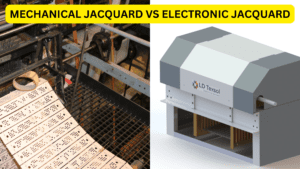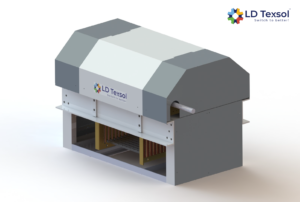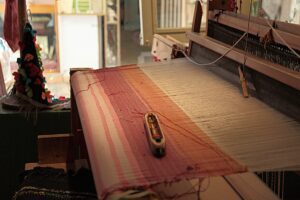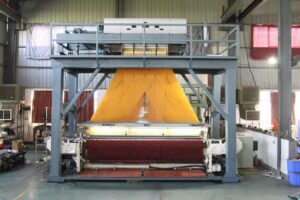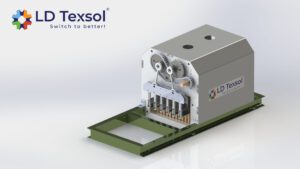In textile manufacturing, few innovations have been as transformative as the Jacquard loom. This remarkable invention revolutionized the weaving industry, making intricate patterns possible with a speed and accuracy that was unheard of before. If you’re involved in textiles or curious about how fabric weaving evolved, the Jacquard loom is a crucial piece of history you should know about.
In this blog, we’ll explain everything you need to know about Jacquard looms, how they work, and their modern adaptations, like the Electronic Jacquard Machine. We will also examine related technologies such as Rapier Jacquard Looms and Shuttle Looms with Jacquard and the significance of Jacquard weaving in today’s textile industry.
Origins of the Jacquard Loom Machine
Joseph Marie Jacquard invented the Jacquard loom in 1804. This early version used punched cards to control the weaving of textiles. Before this invention, weavers had to manually lift and arrange individual threads to create patterns, a labor-intensive process that limited the complexity of designs. With Jacquard’s invention, looms could automatically lift and weave specific threads, allowing for more intricate designs to be made quickly and easily.
This breakthrough impacted the weaving industry, particularly in the production of complex fabrics like brocade, damask, and tapestry. Over time, the Jacquard machine has evolved, and today’s electronic Jacquard machines enhance the principles of the original invention using modern technology.
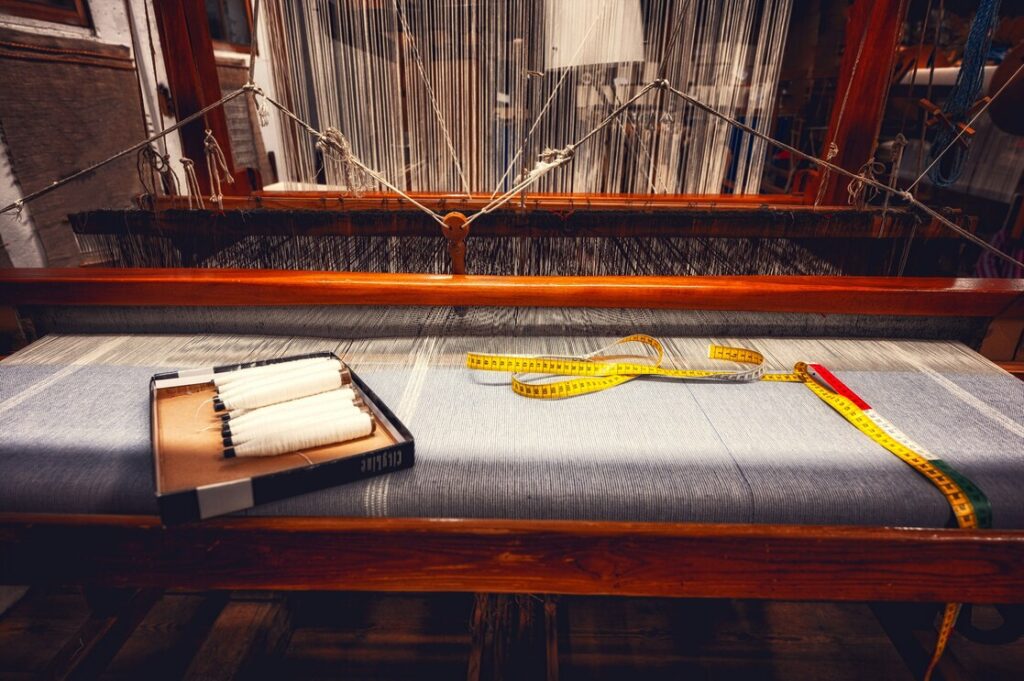
What is a Jacquard Loom machine and how does it work?
Understanding how a Jacquard loom machine works is key to appreciating its significance. Essentially, the loom operates by using a series of cards, with holes punched into them in different patterns. These cards direct the loom on which threads to raise and lower, controlling the interlacing of warp and weft threads. Each card corresponds to one row of the design, meaning the cards can be combined to create any number of intricate patterns.
This process might sound complex, but the beauty of the Jacquard machine is that it automates what we once considered a time-consuming, manual task. The use of punched cards to control the weaving pattern not only sped up production but also increased the level of detail that could be woven into fabrics.
The Emergence of Electronic Jacquard Machines
While the original Jacquard loom was groundbreaking, the invention of the electronic Jacquard machine has taken textile production to a whole new level. These modern machines replace traditional punched cards with digital controls, which allows them to create more complex and varied designs quickly and efficiently.
Electronic Jacquard machines offer several benefits:
- They can store vast libraries of designs, which can be quickly accessed and modified.
- Designs can be changed at the touch of a button, without the need to change the physical cards.
- The machines operate with greater precision and speed than ever before.
This advancement has made electronic Jacquard machines indispensable in large-scale textile production. If you’re looking for an electronic Jacquard machine manufacturer in India, LD Texsol is a great place to start. Check out more about their offerings on their website.
Rapier Jacquard Loom: An Innovation in Jacquard Technology
In addition to the traditional and electronic Jacquard looms – the Rapier Jacquard loom is another significant development. This type of loom uses rapier mechanisms (a method for transferring the weft thread across the loom) in combination with Jacquard technology, making it highly efficient for weaving complex designs in a variety of fabrics.
One of the main advantages of the Rapier Jacquard loom is its versatility. It can weave both light and heavy fabrics with ease, making it a popular choice in the textile industry. These machines are widely used in the production of fabrics like sarees, shawls, and other intricate textiles.
To dive deeper into how these looms work and their importance in weaving sarees, you can explore more in this detailed blog.
Shuttle Loom and Power Looms with Jacquard machine
Another variant in the world of Jacquard weaving is the shuttle loom with Jacquard. This type of loom incorporates Jacquard technology but uses a shuttle mechanism to transfer the weft thread. Though slower than modern looms, shuttle looms with Jacquard attachments are still used for certain types of textiles where precision and tradition are highly valued.
Similarly, power looms with Jacquard capabilities bring the power of mechanical weaving together with Jacquard’s intricate patterning. Power looms offer speed and consistency, while the Jacquard mechanism allows for complex designs to be woven automatically. This combination is widely used in large-scale textile manufacturing, particularly for products that require a high degree of customization.
Jacquard Weaving Today
Jacquard weaving remains one of the most advanced and widely used techniques in the textile industry. Whether it’s for fashion fabrics, upholstery, or decorative textiles, Jacquard looms have the flexibility to handle complex designs and patterns. The precision offered by modern machines, particularly electronic Jacquard machines, has allowed textile manufacturers to push the boundaries of creativity.
One of the best things about Jacquard weaving is its versatility. Whether you’re weaving traditional patterns or creating modern designs, the Jacquard loom machine can handle it all. The transition from the original mechanical machines to electronic Jacquard machines has expanded the possibilities.
For more insights on how electronic Jacquard machines are used in fabric weaving, you can check out this informative blog on the fabric weaving process.
Mechanical vs. Electronic Jacquard Machine
Choosing between a mechanical Jacquard and an electronic Jacquard machine can seem overwhelming, but the main difference lies in how they operate. Mechanical Jacquard machines rely on physical punched cards, while electronic Jacquards use digital programs. For more details on the differences between these two types of machines, check out this in-depth comparison in our blog here.
Choosing the Right Electronic Jacquard Machine
If you are in the market for an electronic Jacquard machine, it’s essential to choose a manufacturer that offers both quality and expertise. In India, companies like LD Texsol specialize in manufacturing cutting-edge Jacquard machines. Their machines are known for their durability, precision, and efficiency. You can explore their full range of products and services here.
Conclusion
The Jacquard loom has come a long way since its invention in the 1800s. From its original form, using punched cards to control weaving patterns, to today’s sophisticated electronic Jacquard machines, this technology has continually evolved. It has transformed the textile industry, making it easier to create intricate designs with speed, accuracy, and efficiency.
Whether you’re interested in learning more about Rapier Jacquard looms, the comparison between mechanical vs. electronic Jacquard machines, or how these machines are used in modern fabric production, one thing is clear: the Jacquard loom has left an indelible mark on the world of textiles.
For more information about electronic Jacquard machines or to inquire about purchasing one, feel free to visit LD Texsol’s website.
